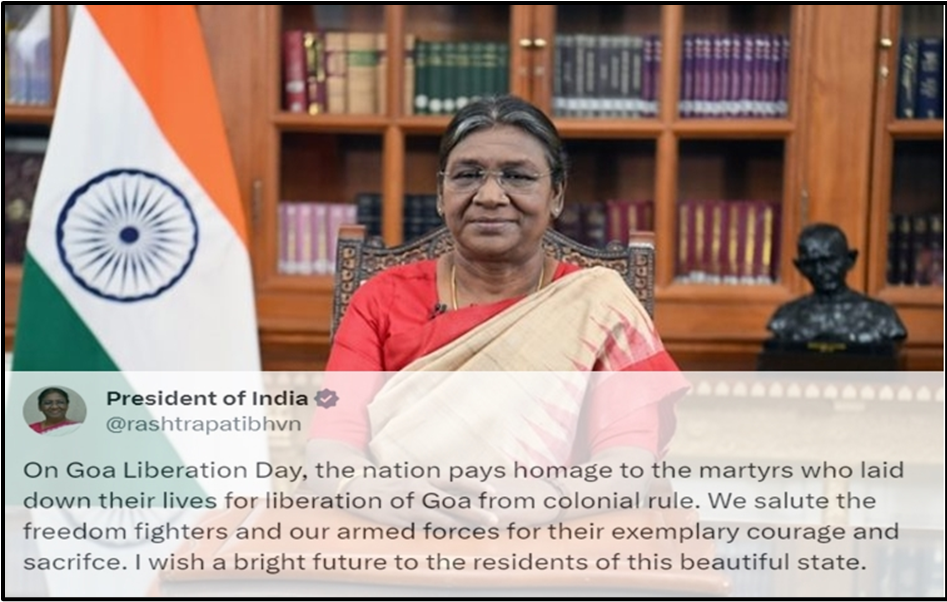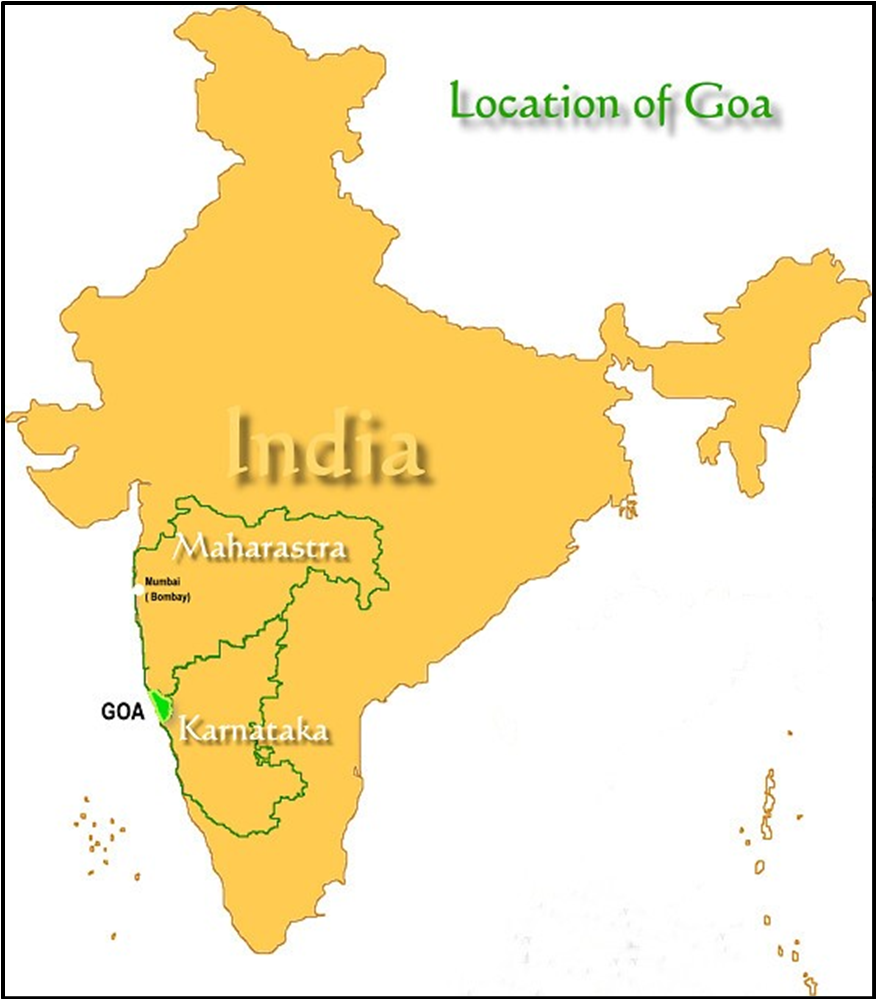Goa Liberation Day
News
- On the occasion of Goa Liberation Day, President Droupadi Murmu honored the martyrs today.
- The President said on social media that the country honors the martyrs who gave their lives to free Goa from colonial control.
- She continued by saying that the country honors the armed forces and the freedom fighters for their heroic bravery and selflessness.
- She wished the people of Goa a prosperous future.
About Goa Liberation Day: Held annually on December 19th, it commemorates the conclusion of the Indian Armed Forces’ 36-hour military operation known as “Operation Vijay,” which freed Goa from Portuguese domination.
Background
- During the Portuguese occupation of the area, which lasted for more than 150 years, Goa played a significant role in both military and commercial operations.
- Revolts against the policies of the Portuguese rulers were documented in the 18th and 19th centuries.
- The liberation movement began to gather steam on June 18, 1946, when socialist Dr. Ram Manohar Lohia joined the Goans in their fight.
- As a result, June 18 is observed as Goa Revolution Day in the state.
- Goa was liberated by the Portuguese fourteen years after India gained independence from British rule on August 15, 1947, in spite of this struggle.
- Following India’s independence, calls for Goa’s independence from Portuguese rule developed and Portuguese rulers surrendered Goa on December 19, 1961, following the dispatch of Indian Armed Forces by then-prime minister Jawaharlal Nehru.
- Along with Daman and Diu, Goa was made a Union Territory of India after being freed and incorporated into the Indian Union.
- It stayed a Union Territory until 1987 when it was granted statehood and turned into the 25th state of India.
Goa Key Facts
- The Western Ghat geographically divide it from the Deccan highlands, and it is situated on India’s southwest coast in the Konkan region.
- Its borders are the Arabian Sea on the west, the states of Karnataka and Maharashtra on the east and south, and Maharashtra on the north.
- Konkani, one of the 22 languages included in the Eight Schedule, is the official language of this region. The 71st Amendment Act of 1992 added it to the list along with Manipuri and Nepali.
- Sonsogor is the highest point in Goa. Goa’s seven principal rivers are The Kumbarjua canal, Talpona, Zuari, Mandovi, Terekhol, Chapora, Galgibag, and Sal.
- Laterites comprise the majority of the soil cover in Goa.
Disclaimer: All efforts have been made to represent India accurately and as per India government. However, Universal School of Administration, Bengaluru and its associated people do not own any responsibility for the correctness or authenticity of the same. Please notify on the email: [email protected] if any inconsistency is found for the factual correctness.





